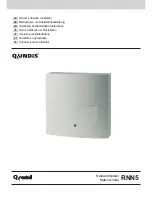
GigabitEthernet 2/0/0
VLANIF 50
-
Loopback1
-
3.3.3.9/32
CE1
GigabitEthernet 1/0/0
VLANIF 10
10.1.1.1/24
CE2
GigabitEthernet 1/0/0
VLANIF 20
10.1.1.2/24
CE3
GigabitEthernet 1/0/0
VLANIF 50
10.1.1.3/24
Configuration Roadmap
The configuration roadmap is as follows:
1.
Complete the task of Configuring Martini VPLS between SPEs and PEs.
2.
Establish the MPLS LDP peer relationship between UPEs and SPEs.
3.
Create a VSI on an SPE, and specify the UPE as its PE of the lower layer.
4.
Create a VSI on a UPE, and specify the SPE as the peer of the VSI.
5.
Configure CE1 and CE2 to access UPE, and configure CE3 to access PE.
Data Preparation
To complete the configuration, you need the following data:
l
Names and IDs of VSIs
l
MPLS LSR IDs (as IP addresses of peers) of UPE, SPE, and PE
l
Routing protocol UPE, SPE, and PE
Procedure
Step 1
Configure the VLAN to which each interface belongs according to
.
The configuration details are not mentioned here.
NOTE
Do not add the AC-side port and PW-side port of a PE to the same VLAN; otherwise, a loop may occur.
Step 2
Configure an IGP.
OSPF is adopted in the example. The configuration details are not mentioned here.
After the configuration, run the
display ip routing-table
command on UPEs, SPEs, and PEs.
You can view that UPEs, SPEs, and PEs have learned the addresses of the loopback interfaces
from each other.
Step 3
Configure basic MPLS functions and LDP.
The configuration details are not mentioned here.
After the configuration, run the
display mpls ldp session
command. You can find that the
Status
of the peer relationship between the UPE and the SPE or between the PE and the SPE is
Operational
, which indicates that the peer relationship is established. Run the
display mpls
lsp
command, and you can view the setup of the LSP.
Quidway S7700 Smart Routing Switch
Configuration Guide - VPN
7 VPLS Configuration
Issue 01 (2011-07-15)
Huawei Proprietary and Confidential
Copyright © Huawei Technologies Co., Ltd.
755
















































